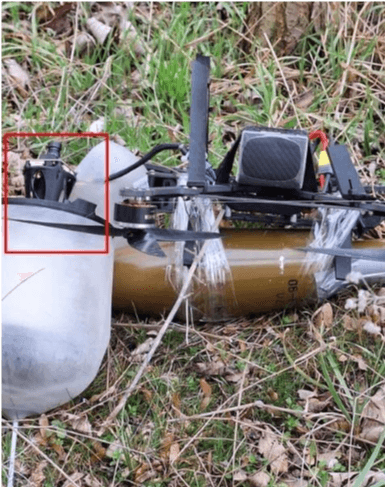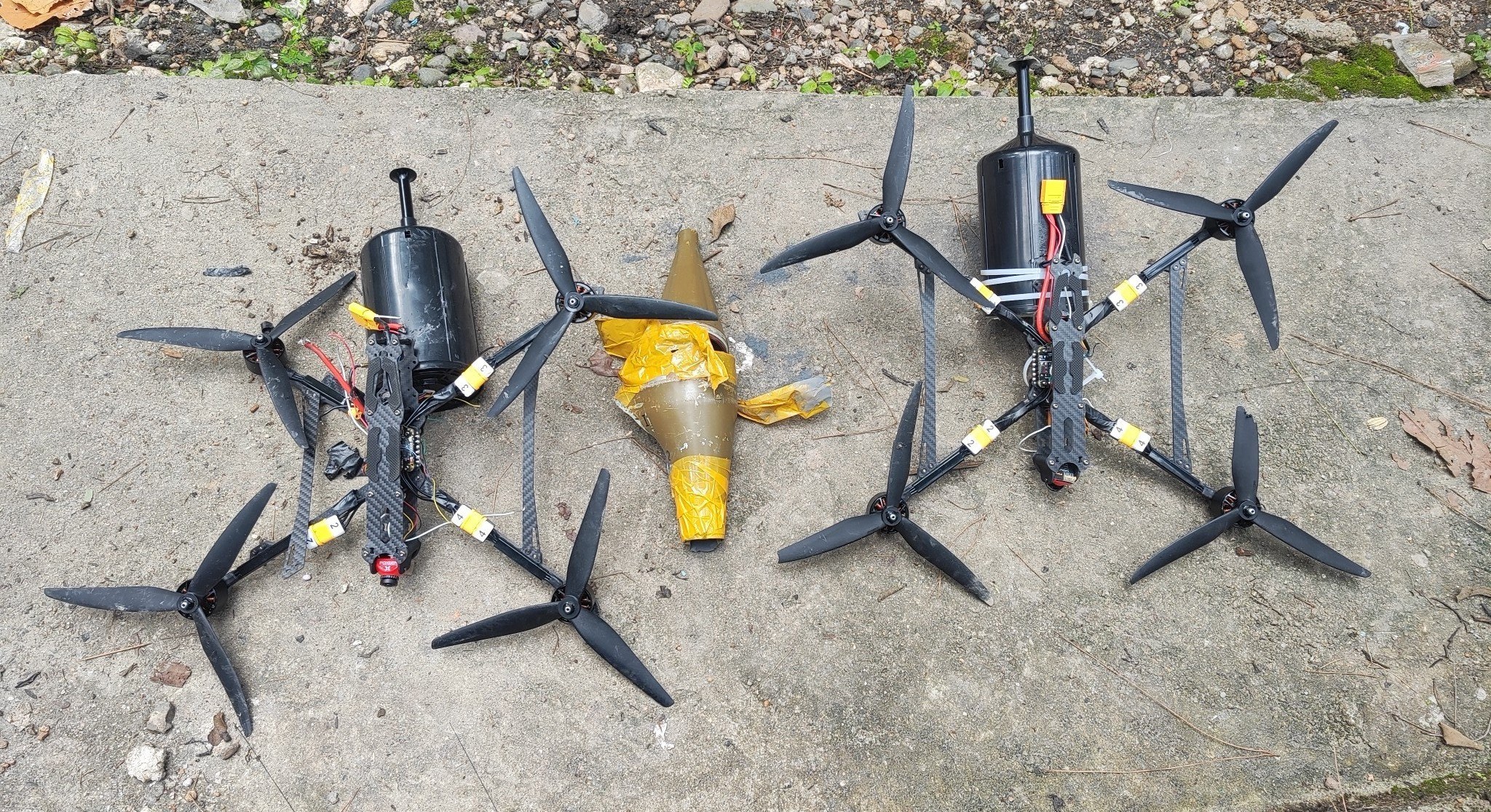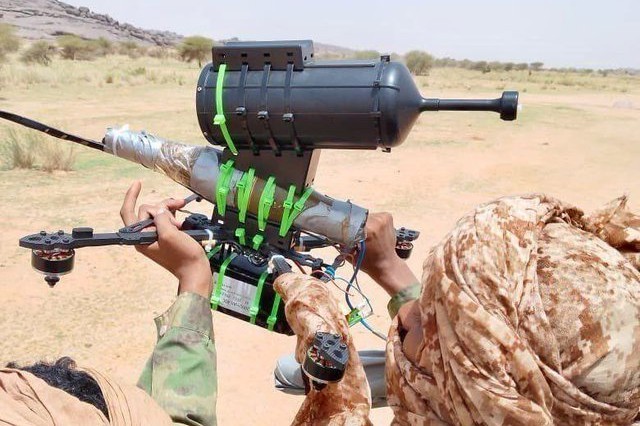
Rising use of one-way attack FPV drones by state and non-state actors
Wednesday 10 September 2025
One-way attack first-person view drones in conflict have become commonplace over the last several years, with reports indicating the majority of Russian battlefield casualties in Ukraine are now due to these munitions. FPV drones are increasingly used in other countries by both state and non-state actors. Similarly, technology used commonly in Ukraine, such as fibre optic drones, can now be seen in other theatres of operation.

One-way attack first-person view drones in conflict have become commonplace over the last several years, with reports indicating the majority of Russian battlefield casualties in Ukraine are now due to these munitions. While many are used to seeing footage of these buzzing the battlefields of Ukraine since the early days of the invasion, FPV drones are increasingly used in other countries by both state and non-state actors. Similarly, technology used commonly in Ukraine, such as fibre optic drones, can now be seen in other theatres of operation. The proliferation of FPV drones and its developments is a lesson and warning of what is likely to come.
What is a one-way attack FPV Drone?
A one-way attack (OWA) first-person view (FPV) drone is also referred to as a suicide/ kamikaze drone or a Loitering Munition System (LMS). Typically, commercial off-the-shelf (COTS) drones are used, with modifications made to use them as an offensive weapon. They can conduct reconnaissance and loiter, then be remotely guided onto a target by an operator, who can target particular vulnerable points on a vehicle or individual personnel. This versatility, while being a comparatively cheap disposable asset, makes them highly valuable.

The warheads typically utilise modified conventional munitions (e.g. PG-7VM); however other explosive ordnance can be used, such as: demolition explosives (e.g. C4); improvised explosive devices (IEDs); and newly developed munitions, purpose-built for OWA drone uses. The use of an FPV drone essentially converts any munition able to be carried into a guided weapon, without requiring a launch system or crewed platform. The range of these drones outstrips all anti-tank guided missiles (ATGMs), and their anti-personnel or anti-structure equivalents.
Adoption by non-state actors
The ease with which drones can be bought, their comparatively low cost, and ability to be fitted with a whole variety of munitions has changed warfare. Their use allows materially weaker actors to inflict high casualties without the expenditure of high end weapons, such as anti-tank guided missiles (ATGMs), that are tightly controlled.
While state actors, such as: Russia; Ukraine; Israel; and others, have used them for years, their use by non-state actors is increasing. In: the Middle East; Africa; North and South America; and Southeast Asia, a variety of insurgent groups, private military contractors and criminal organisations employ OWA FPV drones.

With the use of OWA FPV drones, insurgent groups are easily able to target materially and technologically superior government forces, such as the Tatmadaw in Myanmar, or Turkish forces in the Kurdistan region of Iraq. While the deployment of OWA FPV drones by Wagner and associated government forces in Africa has resulted in their use by the insurgent groups they were targeting, with losses being incurred by attacks in Mali, Burkina Faso, Nigeria, and beyond. As reported previously by Fenix Insight, Islamic State groups are on the rise across the globe, with Puntland security forces recently capturing Islamic State OWA FPV drones in Somalia, showing they are also adopting this capability.
However, from: the destruction of a Colombian police helicopter, killing all onboard; to the targeting of criminal gangs in Haiti by Haitian authorities and Blackwater PMC; and their adoption by Mexican cartels, OWA FPV drones are being employed in countries outside those commonly associated with major conflict.
Introduction of fibre optic drones
The largest development has been the introduction of fibre optic drones, removing the need for radio control guidance. This would be considered a step back in technology for the commercial sector, however this technique still has application within warfare, typically ATGMs (such as the American BGM-71 TOW [Tube-launched Optically-tracked Wire-guided]). The first use of a fibre optic drone in Ukraine was reported by Fenix Insight in March 2024.
 |  |
There are drawbacks to the use of radio-controlled guided systems, predominantly based around the signal transmitted to the operator. The signal is reduced or typically lost in the terminal phase of the flight, due to curvature of the earth and other obstacles reducing the quality of the diffracted radio waves. Additionally, COTS drones typically operate in a particular wavelength region that is well known, hence electronic warfare (EW) can be used to jam those frequencies. Developments were made to expand the available range of frequencies, and utilise frequency-hopping, but EW and other inherent drawbacks are still believed to significantly hamper drone usage.
Fibre optic prevents jamming of the radio frequencies, and provides a far better video quality to the operator throughout the entire flight, ensuring accurate targeting during the terminal phase, and in congested environments. The range is extended significantly, with claims of 50-60 km being made recently. Fibre optic spools have been fitted routinely, or purpose-built drones were developed with fibre optic control.
 |  |
The success of these designs in the Ukraine conflict has led to the proliferation of this technology to other regions. Fibre optic drones have been used by the PKK in Iraqi Kurdistan, the armed groups in Myanmar, and the Azawad National Liberation Movement in Mali.
Conclusion
The mass deployment of OWA FPV drones has both changed warfare and made it more accessible in everyday life. FPV combat footage in Ukraine is distributed en masse, as part of propaganda and psychological warfare efforts from both sides, or by combatants merely posting their experiences. It is easy to see videos depicting OWA FPV drone strikes on various social media platforms.
This has allowed various state and non-state actors to easily assess their effectiveness, then adopt the capability and developments. The proliferation of OWA FPV drone use by non-state actors is expected, easily expanding their inventory of guided munitions with comparatively little associated costs. The introduction of fibre optic drones counters non-kinetic drone defences, such as jamming, introducing significant complications to protecting against this highly potent threat.
We hope this overview of one-way attack first-person view drones has been useful. Our team is dedicated to continuously updating and expanding our events and entries on METIS.
If you have any questions or want to discuss this further, please don't hesitate to reach out.
Source Information
Where our site contains links to other sites and resources provided by third parties, these links are provided for your information only. We have no control over the contents of those sites or resources, and accept no responsibility for them or for any loss or damage that may arise from your use of them. If you find a broken link or a link directing you to website material you feel is unsuitable, please contact us. If you have any queries about information accessed through links, you are advised to check directly with the organisation concerned.

Risks posed by Explosive Remnants of War in Gaza and the associated clearance challenges
26 Nov 2025

Mexican cartels using drones to expand and enhance their arsenals
16 Oct 2025

Lebanese Army claims major Hezbollah disarmament amid Israeli strikes
6 Aug 2025

Development of the Shahed and Geran series one-way attack uncrewed aerial vehicles
3 Jul 2025

